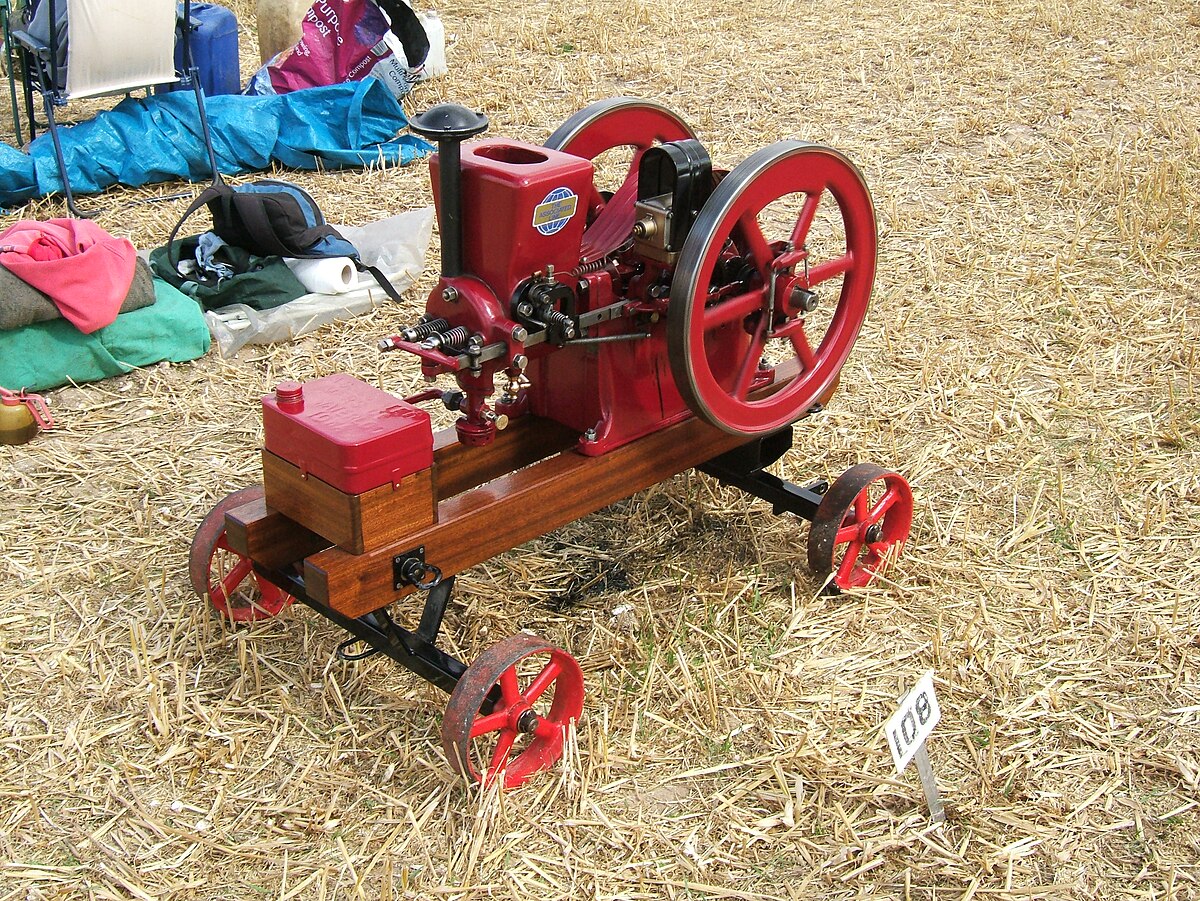A hit-and-miss engine is an early type of internal combustion engine that was widely used in the late 19th and early 20th centuries. These engines are named for their unique operating mechanism that controls the firing cycle based on the engine’s speed. Here are some key points and interesting facts about hit-and-miss engines:
- Operating Principle: The hit-and-miss engine operates by firing (or “hitting”) only when necessary to maintain its speed. When the engine reaches its desired speed, the governor prevents fuel from entering the combustion chamber, causing the engine to coast without firing (or “missing”) until it slows down again.
- Governor Mechanism: The engine’s speed is regulated by a governor, typically a mechanical device with spinning weights. As the engine speed increases, the centrifugal force causes the weights to move outward, triggering a mechanism that stops the intake valve from opening. This prevents the engine from firing and allows it to slow down.
- Fuel Efficiency: Hit-and-miss engines are more fuel-efficient than constant-firing engines because they only use fuel when needed to maintain speed. This made them ideal for applications where the load on the engine varied, such as in agricultural machinery and small industrial applications.
- Applications: These engines were commonly used to power various types of machinery, including water pumps, saws, grain grinders, and other farm equipment. They were also used in factories to drive belts and pulleys for different types of machinery.
- Sound and Rhythm: Hit-and-miss engines are known for their distinctive sound, characterized by the irregular “hit” and “miss” firing cycles. The sound pattern is often rhythmic, with a noticeable pause between hits, depending on the load and speed of the engine.
- Construction and Materials: Hit-and-miss engines were typically made from cast iron and other durable materials. They were designed to be robust and long-lasting, capable of operating in harsh environments and with minimal maintenance.
- Cooling System: Most hit-and-miss engines were air-cooled or water-cooled. Air-cooled engines had large cooling fins cast into the cylinder head and body, while water-cooled engines used a simple water tank and a cooling jacket around the cylinder.
- Starting Mechanism: Starting a hit-and-miss engine usually involved hand-cranking the flywheel. Some engines had a spring-loaded mechanism to help with starting, while others relied on the operator’s strength and timing.
- Historical Significance: Hit-and-miss engines played a crucial role in the mechanization of agriculture and industry in the late 19th and early 20th centuries. They provided a reliable source of power for small-scale operations before the widespread adoption of electric and more advanced internal combustion engines.
- Collectibility and Restoration: Today, hit-and-miss engines are highly collectible among antique machinery enthusiasts. Restored engines are often displayed at fairs, shows, and museums, where they demonstrate early engine technology and its impact on industrial and agricultural practices.
- Variants and Manufacturers: Many different companies produced hit-and-miss engines, each with its own design variations. Some of the notable manufacturers included Fairbanks Morse, International Harvester, Hercules, and Associated Manufacturers. These engines came in various sizes and power ratings, typically measured in horsepower.
In summary, the hit-and-miss engine is a fascinating piece of early engineering that played a significant role in the development of mechanized agriculture and industry. Its unique operating principle and distinctive sound make it a beloved piece of machinery among collectors and historians.
